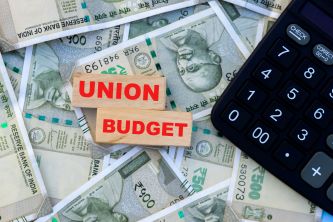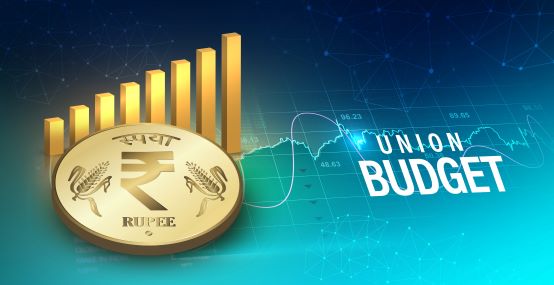Types of Budget in India

Each year at the beginning of February, the finance minister of India presents the annual union budget before the parliamentary houses – the Lok Sabha and Rajya Sabha. A financial statement stating the government's estimated tax revenue/ receipts and expenditure gets presented at the budget. Aspects like tax revenue, non-tax revenue, capital expenditure, and more get discussed. The Union Budget sets the tone of governmental spending for the fiscal year. It addresses the core concerns of the public in areas of healthcare,education, infrastructure, and others that require financing. Budget could be of three types – a balanced budget, surplus budget, and deficit budget. Read on to learn more about them and their consequences on the Indian economy.
Balanced budget
A balanced budget is where the government's estimated expenditure tallies with or equal to its estimated receipts or revenue in a particular fiscal. This budget type aims at living or spending within one's means and is often known by economists as an ideal budget. Under a balanced budget, a government should seek to spend only within the slated revenue/ receipt for the year. However, due to fluctuations in the economy, inflation, and other unprecedented external or internal factors, following a balanced budget can be near impossible or a challenge at the very least. In theory, planning this budget is doable, but in reality, implementing it is difficult. Ultimately, if executed correctly, a balanced budget ensures economic stability and keeps the government expenditure in check. However, on the flip side, it may not solve some recurring problems like unemployment and restricts economic growth.
Surplus budget
A surplus budget is where the government's estimated revenue or receipts exceeds the estimated expenditure in a particular fiscal. In simpler terms, what the government earns in a year, primarily from taxes, import/ export duties, fees, and other revenue, are more than what it spends on public or other projects. On the surface, a surplus budget makes a nation seem like it is doing well and is affluent. As the government has extra financial reserves, it can settle its outstanding dues and reduce its pending loans, interest burden, and debt. However, reducing debt can cause deflation and affect consumer behaviour. If consumers' money goes mostly towards taxes, they will have lesser to spend. Less expenditure can hurt businesses and investments, which can slow down the economy. Ultimately, a budget surplus serves well in times of high inflation but can have adverse effects if adopted for an extended time.
Deficit budget
A deficit budget is a budget in which the government's estimated expenditure exceeds or exceeds the expected revenue/ receipts of that fiscal year. In a budget deficit, the government spends more than it receives in revenue. As a result, it might have more borrowings and debt. To bridge the fiscal deficit, the government might rely on its surplus reserve or increase tax rates. A deficit budget can carry positive implications for developing countries like India if the deficit remains within limits.. For instance, the first indicator of a deficit budget is government spending on public projects in infrastructure, healthcare, pension programs, and other areas. It can also lower taxes and boost the employment rate in recession. As the government takes it upon itself to increase employment opportunities, the result would be an indirect increase in the total demand for goods and services. This, in turn, can boost a sluggish economy. However, just as a continued surplus budget carries its cons, so does a continued deficit budget.
Conclusion:
The union government budget is a great way to analyze a nation's economic growth. It shows that a government is transparent with its citizens by sharing its deficit and surplus expenditure. By understanding the types of budget, you can understand the state of the economy for a particular fiscal.
ICICI Securities Ltd. ( I-Sec). Registered office of I-Sec is at ICICI Securities Ltd. - ICICI Venture House, Appasaheb Marathe Marg, Prabhadevi, Mumbai - 400 025, India, Tel No : 022 - 6807 7100. The contents herein above shall not be considered as an invitation or persuasion to trade or invest. I-Sec and affiliates accept no liabilities for any loss or damage of any kind arising out of any actions taken in reliance thereon. The contents herein above are solely for informational purpose and may not be used or considered as an offer document or solicitation of offer to buy or sell or subscribe for securities or other financial instruments or any other product. Investments in securities market are subject to market risks, read all the related documents carefully before investing. The contents herein mentioned are solely for informational and educational purpose.
Please Enter Email
Thank you.
Related content

Articles - Personal Finance
What is PM Gati Shakti Yojana
Hon'ble Finance Minister Nirmala Sitharaman unveiled three major economic railway corridors in the interim budget of 2024 for the PM Gati Shakti Yojana. Explore detailed information about PM Gati Shakti Yojana.

Articles - Personal Finance
Analysis of Interim Budget 2024
Get to knwo about the impact of interim budget 2024 and a detailed analysis in this article.

Articles - Personal Finance
What Is a Surplus Budget
Learn about surplus budget and how a budget surplus impacts the economony.

Articles - Personal Finance
What is a Budget Deficit
Find out the importance of budget deficit. Cause of budget deficit and What is the relationship between budget deficit and stock markets

Articles - Personal Finance
Union Budget 2024 – Trivia Part 2
The Union budget 2024 presentation is just around the corner. Let us look at some trivia regarding the Union budgets from the past

Articles - Personal Finance
What is Union Budget and Why it so Important
Learn about the what is the Union Budget in this article for a comprehensive information of its importance.

Articles - Personal Finance
Union Budget: Key Details & Importance
As we come closer to February 1, the chatter around the expectations over Union Budget increases. From young college students looking to start their careers and small business owners to leading economists and industrialists, almost every Indian citizen keeps a tab on the Budget announcement. Let us discuss what is Union Budget and its importance for the economy.

Articles - Personal Finance
Impact of the Budget 2024 on Share Markets
The Union Budget 2024 got quite a cheer from the share market as major indices ended on a positive note. The NIFTY 50 and the Sensex benchmark indices gained during the Budget speech and finished green.

Articles - Personal Finance
What to Expect From Budget 2022 for Individuals and Salaried People
Over the last two years, individuals, especially salaried people, have taken quite a hit because of the pandemic. Work from home has not only increased expenses such as electricity and WiFi bills but has also put a strain on take-home salary. Naturally, people hope that the government will step in and ease some of these troubles through their Union Budget announcements.

Articles - Personal Finance
What is the impact of the Union Budget on the Indian Stock Markets
Indian stock markets are dynamic prone to ups and downs depending on a host of factors. Every year, one major event that impacts the equities and bond markets is the announcement of the Union Budget.

Articles - Personal Finance
History of the Union Budget in India
The ritual of presenting the Indian Budget is more than two centuries old, dating back to colonial times. India's first-ever Budget was presented by James Wilson in 1860, a Scottish economist and politician.

Articles - Personal Finance
10 Taxes Affected by Budget
Taxes are the most crucial and most significant source of revenue for the Government. The Government uses the revenues generated from taxes to provide basic facilities to its citizens and the nation's overall development. For example, construction of roads, buildings, infrastructure, public healthcare facilities, providing various subsidies, etc.

Articles - Personal Finance
What is Populist Budget
A budget typically meant to please people is known as a populist budget. It spends more on lucrative schemes that can increase the Government's fiscal deficit. Such a budget doesn't have any enduring positive impact on the country's economy.

Articles - Personal Finance
What are the Components of Union Budget
The Union Budget of India has two main components, each with two sub-components. To know more in detail, visit the link.

Articles - Stocks
What is the Budget? Union Budget for Beginners
The Finance Minister of India presents the Union Budget on the first day of February every year. It is also known as the annual financial statement of the country. It contains the details of the revenue sources and expenses undertaken by the Government during the applicable financial year.

 Top Mutual Funds
Top Mutual Funds







COMMENT (0)